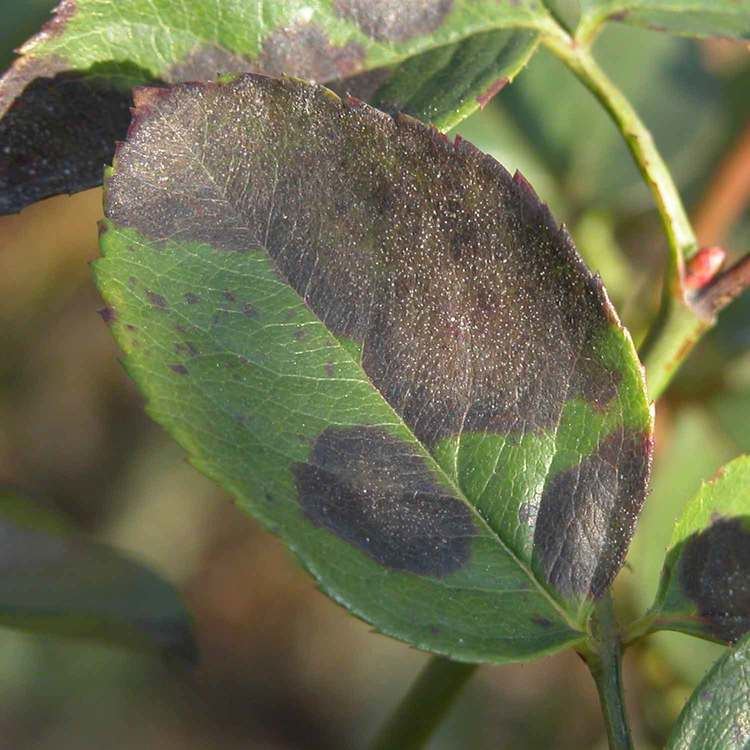Kingdom Fungi Rank Species | Genus Diplocarpon Higher classification Diplocarpon | |
 | ||
Similar Diplocarpon, Podosphaera pannosa, Marssonina, Hybrid tea rose, Phragmidium mucronatum | ||
Our roses preventing black spot fungus diplocarpon rosae
Diplocarpon rosae is a fungus that creates the rose black spot disease. Because it was observed by people of various countries around the same time (around 1830), the nomenclature for the fungus varied with about 25 different names. The asexual stage is now known to be Marssonina rosae, while the sexual and most common stage is known as Diplocarpon rosae.
Contents

Diplocarpon rosae over seasons as mycelia, ascospores, and conidia in infected leaves and canes. In the spring during moist, humid conditions, ascospores and conidia are wind-borne and rain-splashed to newly emerging leaf tissue. Upon infection, disease progresses from the lowest leaves upward, causing defoliation and black spots on leaves.

Diagnosis

The black spots are circular with a perforated edge, and reach a diameter of 14 mm. Badly affected plants, however, will not show the circular patterning, as they combine to cause a large, black mass. The common treatment of the disease is to remove the affected leaves and spray with antifungal solutions. Some stems of the roses may become affected if untreated, and will cause progressive weakening of the rose.
Treatment
Removing infected leaves from the plant and fallen leaves from the ground will slow the spread of the infection, as does avoiding wetting the leaves of plants during watering. An infected plant can be removed from the area, which will slow the spread of infection to other plants, but this often is not desirable. Fungicides, such as mancozeb, chlorothalonil, flutriafol, penconazole, or a copper-based product, applied upon new leaf emergence or first appearance of black spot, can be used to control the disease. If a more natural and nontoxic approach is desired, diluted neem oil is effective both against black spot and as an insecticide against aphids. It is usually necessary to repeat the spraying at seven- to 10-day intervals throughout the warmest part of the growing season, as the fungus is most active at temperatures from 75 to 90 °F.
